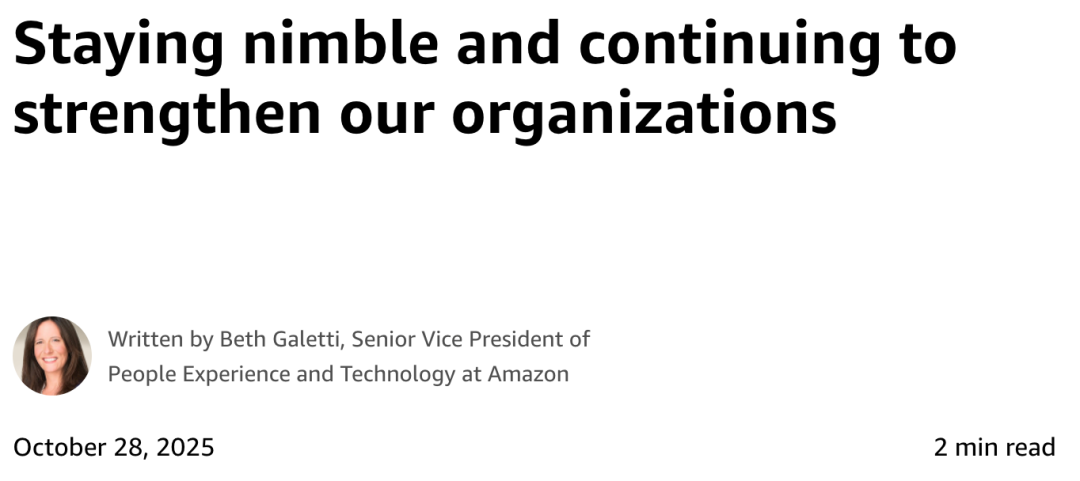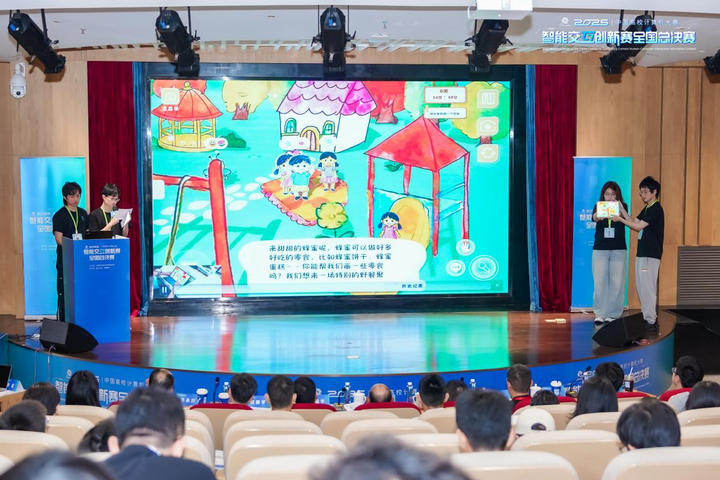14,000 Jobs Cut Overnight: Amazon’s Reality Today — Workers Struggle as AI Robots Surge
Amazon’s Mass Layoffs: AI, Automation, and the Future of Work
Amazon’s recently announced “30,000-person bloodletting plan” is officially underway.
Just now, 14,000 Amazon employees were told they no longer have jobs — while the company accelerates the deployment of AI and robotics into its workforce.
---
Immediate Impact: Accounts Locked, No Time to Prepare
In some cases, before the formal process even started, computer accounts were locked, leaving employees unable to even back up files.
> “I instantly lost access to everything 🙁”

The cuts have been performance-blind — impacting even rapid high performers.
> “Promoted from L4 to L6 within 3 years, I thought I was high-value talent. Turns out, I’m just another replaceable AI-era cog…”

---
Investor Response: A Stock Market Boost
Amazon’s shares jumped 1% on the day of the announcement.
Some veteran employees joked:
> “If layoffs push the stock higher, then my stock profits might as well be my severance check.”

---
What Happened: Inside the Announcement
Timeline
- Date: October 28
- Recipients: ~14,000 employees
- Source: Internal “Letter to Staff” from Beth Galetti, SVP at Amazon
Galetti revealed that about 4% of Amazon’s 350,000 full-time corporate workforce would be let go.

---
Key Details
- Net layoffs only: Employees transferring to other internal teams aren’t counted in the 14,000.
- Second-chance window: 90 days to find another internal role; recruiters will prioritize affected staff.
- Support offered: Severance pay, outplacement coaching, and extended healthcare coverage.
---
Who's Affected Most?
Business Insider reports:
- 78% of the first 7,500 affected were L5–L7 managers (junior to senior).
- 80%+ came from retail operations — marketplace, logistics, grocery divisions.
Earlier in 2025, Amazon froze retail hiring budgets and began redirecting funds toward delivery network upgrades.
Even AWS — Amazon’s profitable cloud division — faced layoffs in July.
---
The AI Factor
In June, CEO Andy Jassy stated:
> “In the coming years, we will use AI to improve efficiency, and this will reduce our overall headcount.”
Despite losing some ground to rivals like Microsoft Azure and CoreWeave, Amazon’s Q2 earnings (July) showed:
- Sales: $167.7 billion (+13% YoY)
- Outperformed Wall Street expectations
---
Official Reasoning
Beth Galetti explained:
> “Why cut jobs when results are solid? The world changes fast. AI is the most transformative technology since the internet. To seize this opportunity, we must streamline our organization.”
Jassy put it bluntly:
> “We need fewer people in some roles, and more in others.”
---
Strategic Shift: From Payroll to Robotics
Amazon is reallocating payroll savings into:
- Fixed asset investments
- R&D spending
- New automation capabilities
One major investment: Amazon’s $400 million acquisition of robotics startup Covariant.
---
Intelligent Robotics Rollout
Covariant’s technology enables robots — like Bluejay and Starling — to:
- Adapt to varied environments
- Handle packages of different sizes and shapes
- Enhance warehouse automation
By 2024, Amazon’s newest fulfillment centers became fully automated, with thousands of robots managing order picking and fulfillment.
Goal by 2027: Expand this automation model to ~50 fulfillment centers.
---
Potential Blue-Collar Impact
- Amazon employs ~300k directly
- Over 1.2 million are contractors in warehousing/logistics
- Analysts predict 500,000+ blue-collar jobs could be replaced within a few years
So far, public concern remains muted — largely because this is still in the planning stages.
---
A "Replacement Model" for Humans
Amazon’s case illustrates that:
- AI doesn’t need fully mature tech before replacing jobs
- Humans become “replaceable production factors” to free resources for AI initiatives
Compared to Apple’s cautious automation pace, Amazon’s bold AI bet could backfire if the AI bubble bursts.
---
Industry Reaction
One PayPal employee remarked:
> “If they keep shouting ‘AI’ while laying everyone off, then when no one has money left, who exactly will buy their dumb AI products?”

---
The Irony: Meeting Room Shortages
Insiders note that HR has been booking meeting rooms solid:
“30,000 people — we talk to them one by one.”
---
References
- https://www.businessinsider.com/amazon-layoffs-what-we-know-teams-roles-affected-job-cuts-2025-10
- https://www.aboutamazon.com/news/company-news/amazon-workforce-reduction
- https://www.businessinsider.com/amazon-layoffs-hit-retail-managers-hardest-aws-could-be-next-2025-10
- https://www.reddit.com/r/amazonemployees/comments/1oi5x5y/megathread_us_layoff_impact/
- https://www.retailcustomerexperience.com/news/amazon-robots-may-replace-500k-plus-jobs-in-years-ahead/?utm_source=chatgpt.com
---
Beyond Amazon: AI Platforms for Individuals
Platforms like AiToEarn官网 are enabling creators to:
- Generate and publish AI-powered content across Douyin, Kwai, Bilibili, Rednote, Facebook, YouTube
- Analyze performance
- Monetize globally
While not a replacement for all corporate roles being cut, these ecosystems show how AI is opening alternative work paths outside traditional employment.
---
Bottom Line: Amazon’s layoffs reflect less a crisis than a strategic reallocation toward AI and automation — and for workers, adaptability in this transition is no longer optional.



